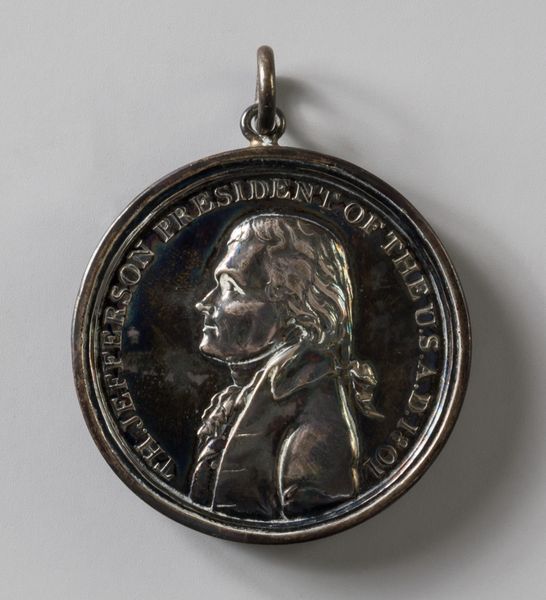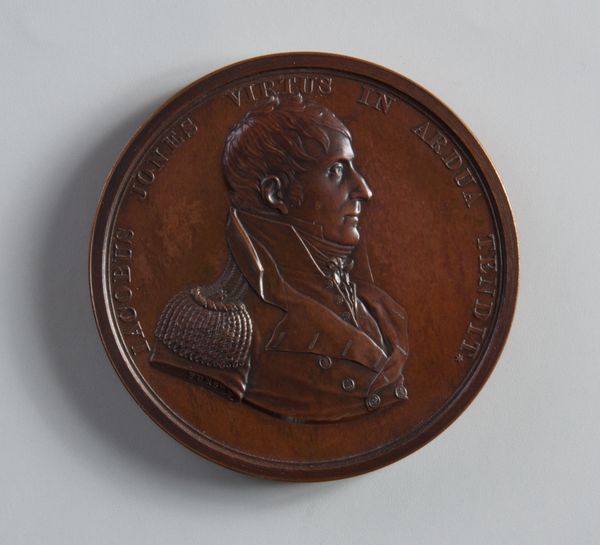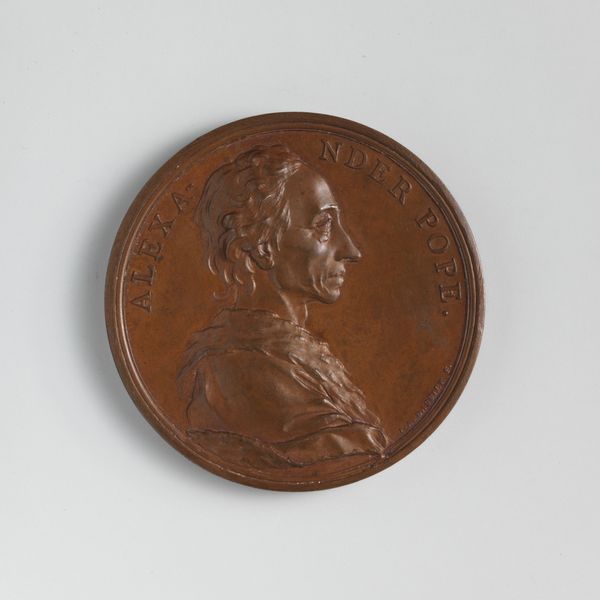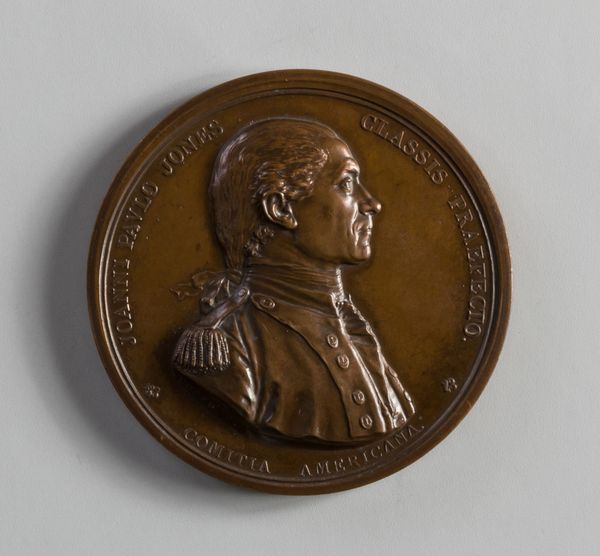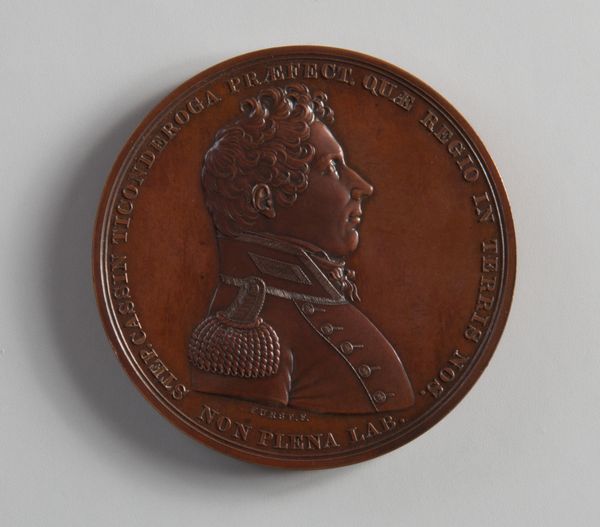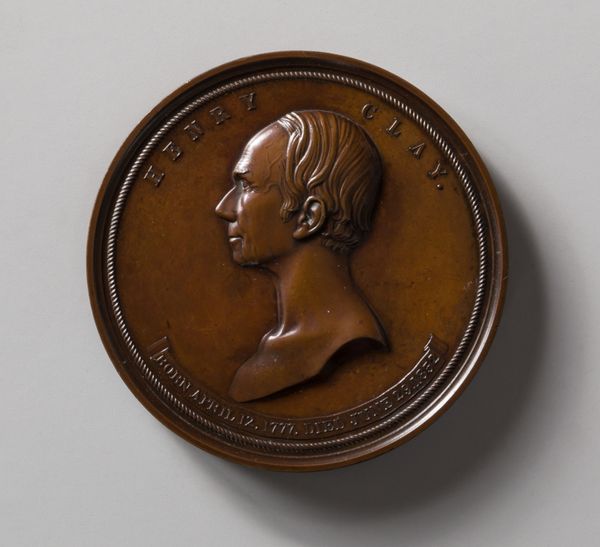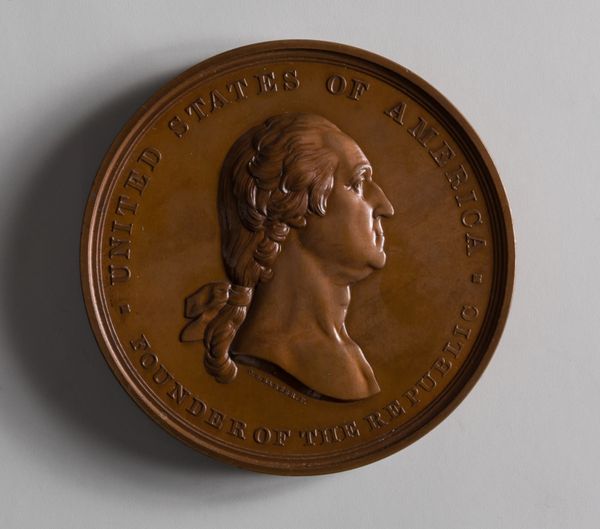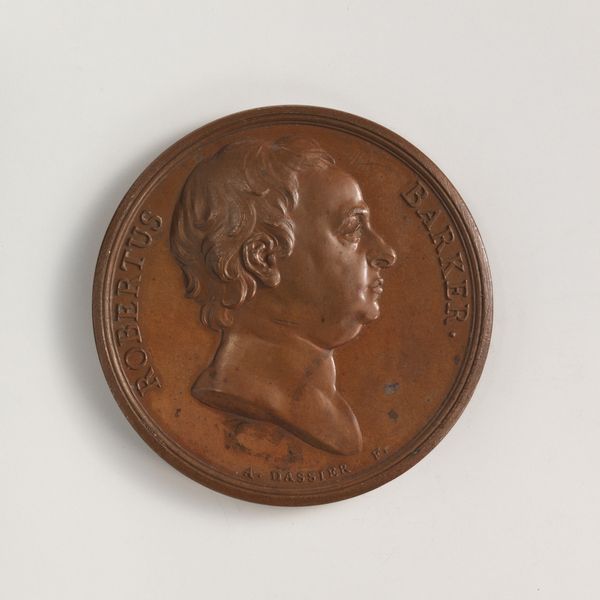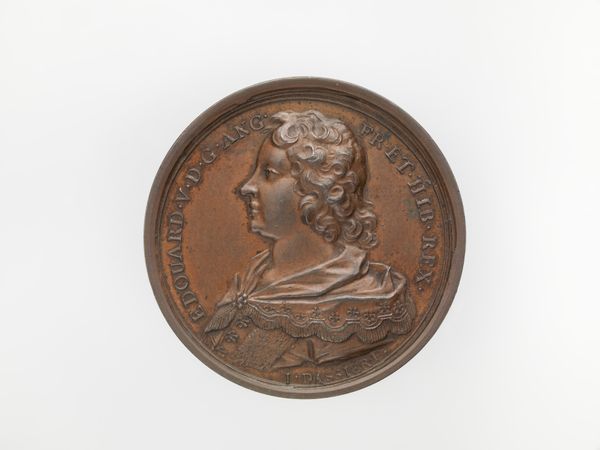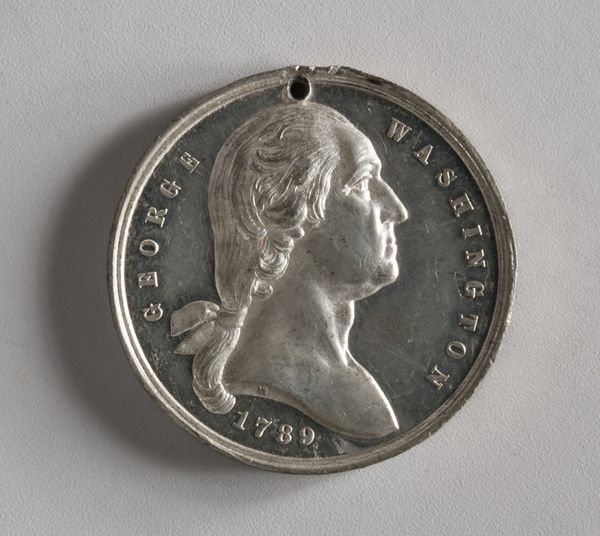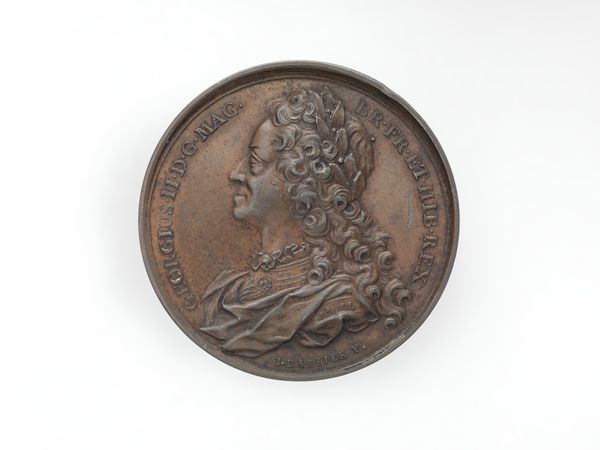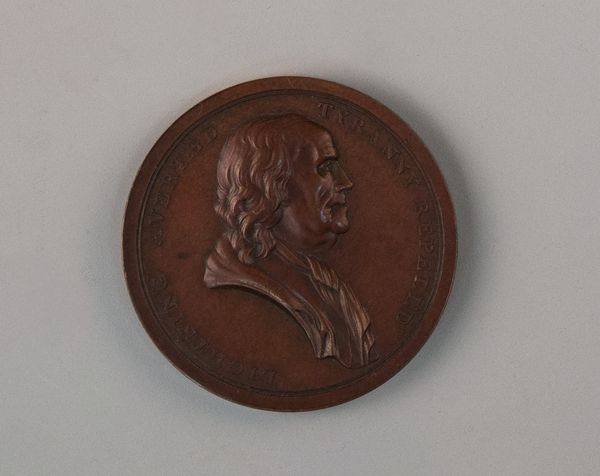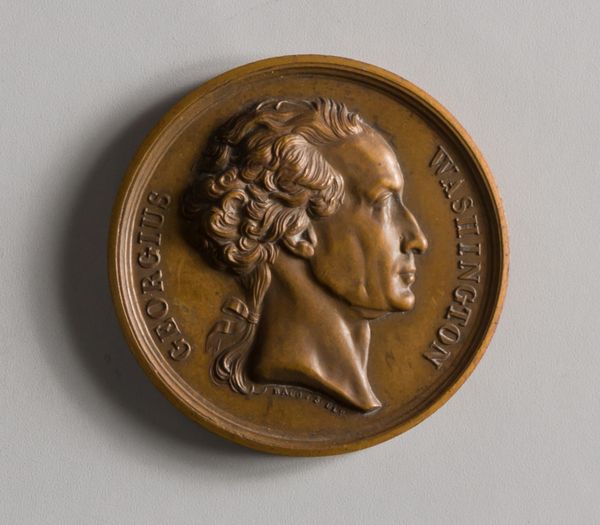
Medal Commemorating the Declaration of Independence 1782
0:00
0:00
bronze, sculpture
#
portrait
#
neoclacissism
#
sculpture
#
bronze
#
sculpture
#
france
#
history-painting
Dimensions: Diam. 1 7/8 in. (4.8 cm)
Copyright: Public Domain
Editor: So, here we have a bronze medal made in 1782 by Augustin Dupré, called "Medal Commemorating the Declaration of Independence". It’s smaller than I imagined, but incredibly detailed. The profile reminds me of a Roman goddess. What catches your eye when you look at this piece? Curator: That's an interesting observation. For me, it’s how Dupré, a French artist, captures the essence of American liberty through this classical, almost idealized figure. It's a moment where Neoclassical style becomes intertwined with a revolutionary ideal, cast in bronze. The woman's portrait exudes resolve and serenity, juxtaposed with the words "Libertas Americana" and a symbolic pileus staff.. Almost like a Roman coin celebrating the new republic. Doesn’t the profile seem familiar? Editor: You're right, I do see the classical influence and resemblance. Also the date – July 4th, 1776, is proudly displayed. But the staff confuses me. Is there something specific the artist might be referencing there? Curator: The "pileus" staff is key, isn't it? It's not just any stick; it's a symbol of liberation used since Roman times. So, Dupré’s medal isn't merely commemorating a declaration; it's aligning America's revolutionary act with the most profound and lasting ideals of freedom. France's support for the revolution really shines through. Don't you agree it feels almost... hopeful? Editor: Absolutely! Now I can appreciate this medal not only as a piece of art but also as a symbol of liberty that connects cultures and epochs. That staff and cap speak volumes! Curator: Exactly. The melding of styles, influences and intention makes for such an inspiring work of art! It gives one a sense of wonder to see how a single object can encompass so much.
Comments
No comments
Be the first to comment and join the conversation on the ultimate creative platform.
